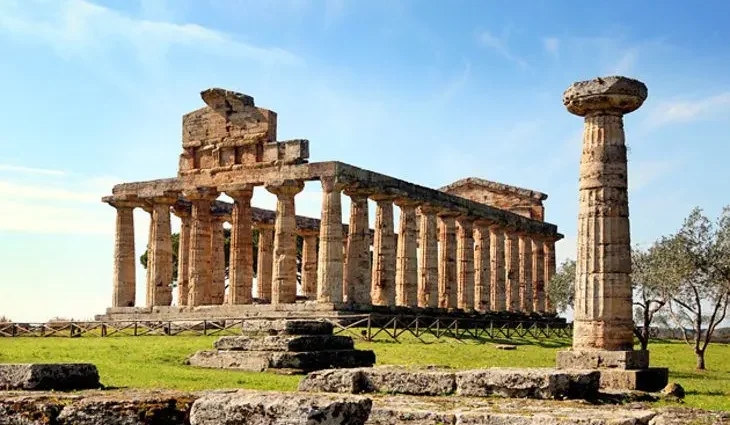Contents
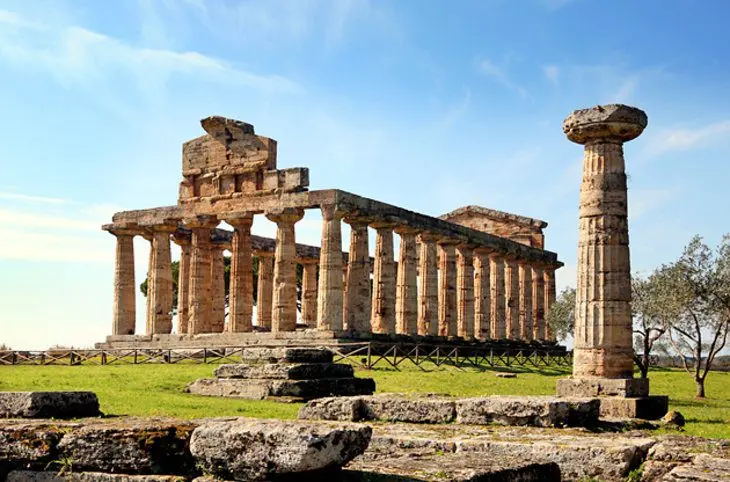
The plain near the Gulf of Salerno, part of the Tyrrhenian Sea, proved a poor site for the substantial settlement founded by Greeks around 600 BCE, surrounded as it was by malarial marshlands. But despite malaria, it survived for two centuries and then as a Roman city for 1,000 years more.
It wasn’t until the region was devastated by the Saracens in the ninth century that its inhabitants abandoned the town, taking with them a relic of St. Matthew, which tradition held to have been in Paestum since the fourth century. They founded a new settlement on the neighboring hills at Capaccio, leaving behind temples and buildings that were pillaged 200 years later by Norman conquerors to use in building, among other things, the cathedral in Salerno.
Yet for all this abandonment and pillage, the ruined temples and cemeteries of Paestum comprise the finest remains of Greek architecture on the mainland of Italy. In combination with the adjacent Cilento National Park and the Roman resort of Velia, built on the now excavated earlier Greek settlement of Elia, the area has been named a UNESCO World Heritage site, making this a must-see for any tourist interested in historical attractions.
On This Page:
- Paestum Archaeological Site
- National Archeological Museum of Paestum
- Cemeteries and Tomb Paintings
- Town Walls
- Amphitheater
- Velia (Elea)
- Where to Stay in Paestum for Sightseeing
- Tips & Tours: How to Make the Most of Your Visit to Paestum
Paestum Archaeological Site
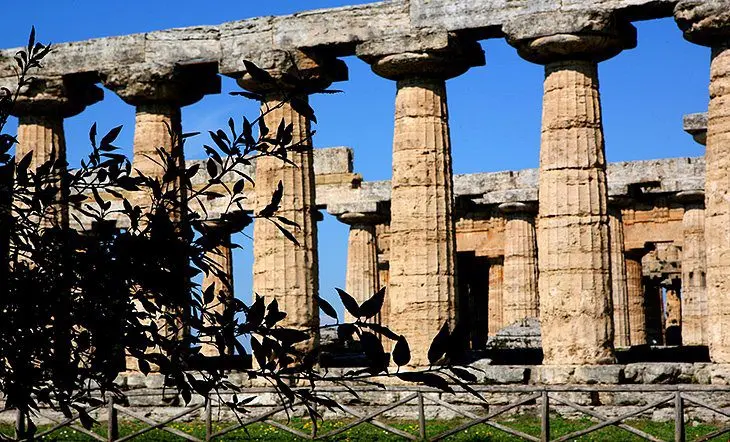
The temples and ruins at Paestum are excellent examples of ancient Greek architecture, built of limestone that has weathered to a yellow tone. The site is in three distinct areas, two sacred areas with temples and between them, the public space and buildings that were originally the agora under the Greeks and later became the forum.
You can still see a section of the ancient Via Sacra, which ran north/south across Paestum. Opposite the entrance is the magnificent Temple of Hera (also called the Temple of Neptune), an outstanding example of the strictly disciplined architecture of the fifth century BC, reflecting the Greek ideal of harmony and proportion. At the east end of the temple, you can see the tip of an earlier oval structure, and to the east are remains of the sacrificial altar.
The oldest temple, misnamed the Basilica can be dated to the late sixth century BC by the noticeable swelling of the columns and by the form of the capitals. Here, too, are the remains of an earlier oval temple and an altar. North of the Temple of Hera is the forum, which was surrounded by a colonnade of late Doric columns.
On the north are the massive substructures of the Tempio Italico (273 BC), with one column re-erected. On the so-called Temple of Ceres, you can see traces of stucco and painting on the gable, which shows Ionic influences.
National Archeological Museum of Paestum
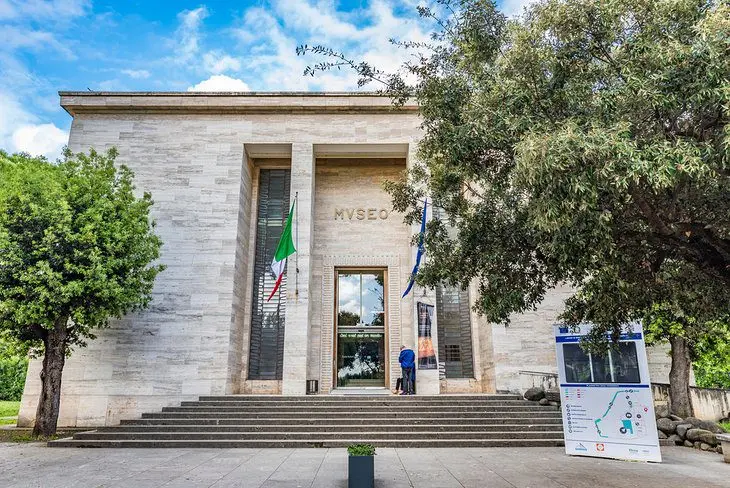
Although it contains some finds from Paestum, what makes this one of Italy’s most outstanding archaeological museums is its collection of finds from the sixth-century Temple of Hera at the mouth of the River Sele. Older than anything at Paestum itself, this temple was demolished, and its marble burned for lime in the Middle Ages.
Twentieth-century excavations have unearthed a remarkable collection of Metopes, deep relief carved limestone panels that formed a frieze at the top of the treasury, which has been reconstructed inside the museum.
Climb to the viewing platform to see these, especially the most famous showing Hercules carrying the Kerkopes in a pole. Also outstanding are the tomb paintings found in the nearby necropoli, as well as Greek statues and one of the finest collections of prehistoric pottery from the Neolithic, Bronze, and Iron ages.
Cemeteries and Tomb Paintings
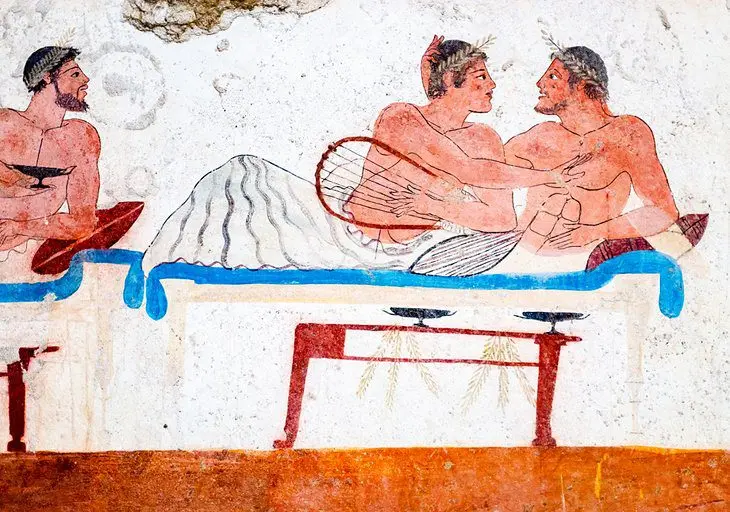
Outside the town walls of Paestum, three large cemeteries with excellent tomb paintings have been discovered since 1968. To the north are 70 tombs dating from the fourth century, painted in vivid colors with scenes from everyday life, which throw fresh light on the discovery of color, light, and shade, and spatial representation in Western art.
On the west side, a large cemetery was found, with thousands of third-century tombs painted in a style that shows how much of southern Italy still belonged to the Greek cultural sphere even during the Roman period.
On the south side are tombs of the fifth century BC, at the height of the Greek period, with frescoes in the style of the classical vase-painters. Many of the paintings from these have been moved to the museum to protect them. Altogether more than 500 tomb paintings have been discovered so far.
Town Walls
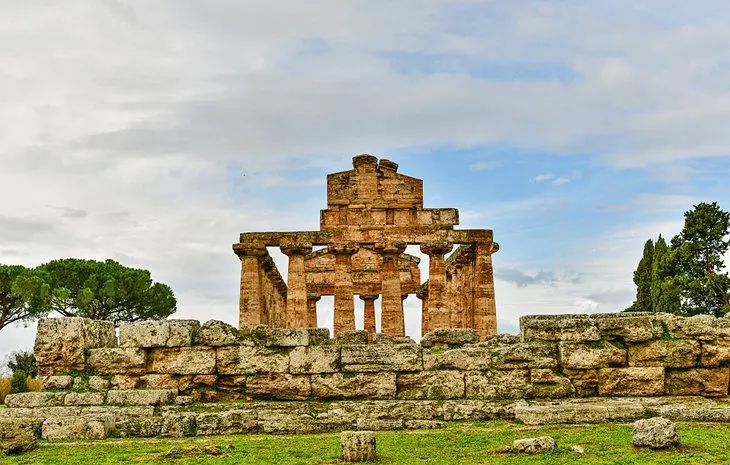
The site of the ancient city of Paestum is enclosed by a magnificent circuit of town walls, built in the fourth and third centuries BC. Four gates–one at each of the cardinal points–and a number of towers punctuate the 4.75-kilometer length of the walls. If you have time, walk around them to admire excellent views of the site and the sea.
Amphitheater
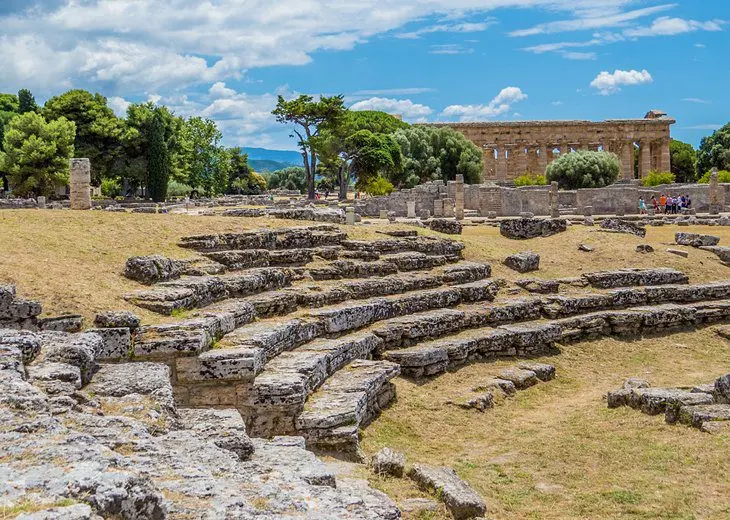
Immediately south of the museum in Paestum is an amphitheater from the Roman period, between about 50 BCE and 50 CE, when the outer ring was added to increase seating. Although about half of it was destroyed by a road built across one end of it in 1930, the rounded end and entrance gate are easy to distinguish.
Velia (Elea)

Not far south of Paestum is the interesting Velia, once a popular resort of the Roman aristocracy, where you can see the remains of several villas and town gates. But even more interesting is what archaeologists have found about five meters below the Roman resort.
An earlier Greek town founded in 536 BC by Phoenicians has yielded some fine pieces of statuary and the fourth-century BC Porta Rosa, a masterpiece of Greek architecture. Between 540 and 460 BC, Elea had a population of 40,000 and was the home of the famous Eleatic school of philosophy, as well as a noted school of medicine.
Excavation of the ancient city is still in progress, and finds are displayed in various buildings. On a hill to the north, excavations have revealed foundations of a fifth-century BC temple destroyed during the construction of the medieval castle, along with remains of three smaller temples, a sacrificial altar, baths, several second-century BC houses, and a square tower from the fourth century BC.
Where to Stay in Paestum for Sightseeing
Mid-Range Hotels:
- Next to the Porta Aurea, one of the four gates of old Paestum, Il Granaio dei Casabella occupies an old barn that has been tastefully repurposed as a hotel, but retains some of its antique features. There is a restaurant, and others are within a five-minute walk. The garden is lovely and there are family rooms.
- The large terrace has two swimming pools and a hot tub, plus there is a private beach. A few meters from the beach and accessed by a path, Mec Paestum Hotel has 48 rooms and suites; deluxe-level rooms have a panoramic view of the mountains, garden, and sea. Each room has a deck with a table and chairs, and amenities such as safes and hair dryers.
- Hotel Villa Rita is in the countryside just outside the walls of ancient Paestum, about a 10-min walk from the Greek temple. There’s a restaurant, and a pool set in the lovely grounds. It’s about a two-minute drive from the train station, and the hosts will pick you up and return you to the station.
Budget Hotels:
- A four-minute walk from the Temple of Athena, and a couple of minutes from restaurants, Casa Rubini has charming antique features, such as wooden beams and exposed brick work. Hosts will meet trains and loan guests bikes to ride to the beach.
- The renovated historic building that houses Hotel dei Templi has also added modern amenities without losing its charm. Spacious rooms have seating areas, and breakfast is included. It’s a five-minute walk to the Temple of Athena, even shorter to restaurants.
- A sandy beach with crystal water is a one-minute walk from La Locanda del Mare . The archaeological site is a 15-minute drive, making this a good choice for those traveling by car. The excellent restaurant specializes in seafood. In a lovely village a short drive from the temples, B&B Melanella is also close to the beach. The included home-cooked breakfasts are exceptional.
Hotels for Families:
- The four-star Medea Beach Resort not only has a large swimming pool and terrace set in its spacious grounds, but a long sandy beach on the Tyrrhenian Sea. There are family rooms and suites, a kids’ club, and family activities.
- Hotel Cerere , only half a mile from the archaeological sites, has a semi-Olympic pool, tennis court, and soccer pitch. A shuttle takes families to the hotel’s private beach, where there are sun loungers and changing rooms. Rooms and suites all have private balconies, and the annex has two-bedroom apartments sleeping four or five guests.
Tips & Tours: How to Make the Most of Your Visit to Paestum
- Guided Tour: For a deeper understanding of the temples and their history, you can book a private tour , led by a certified archeological guide. The two-hour exploration of the temples and museum includes background on the people who lived here and their lives, as well as insights into their art and civilization.
- Visiting Paestum with Kids: For children old enough to have studied even a little of world history, Paestum is like stepping back inside ancient Greece. The towering temples fascinate them, and the explanatory panels are easy to understand. Because Paestum is relatively small and uncrowded, with open-air attractions that you can tour at your own pace, it is not overwhelming for young visitors. Be sure they (and you) are wearing sturdy shoes, as although it is relatively flat, the terrain is uneven (strollers are difficult to use here). Best of all, the family admission rate for two adults and one or more children is cheaper than the price for two adults.
More Related Articles on PlanetWare.com

Where to Go from Paestum: If you are looking for more things to do in the area, the attractions of the Amalfi Coast are just a short drive away, and the lovely town of Sorrento makes a good base for seeing these and the lovely island of Capri.
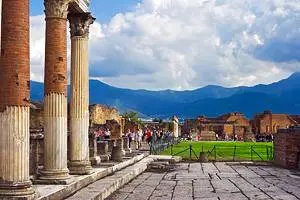
Exploring More Ancient Cities: Also close are the cities destroyed by the eruption of Vesuvius in AD 79, and our pages on Visiting Pompeii and Visiting Herculaneum will guide you to the top sights.










